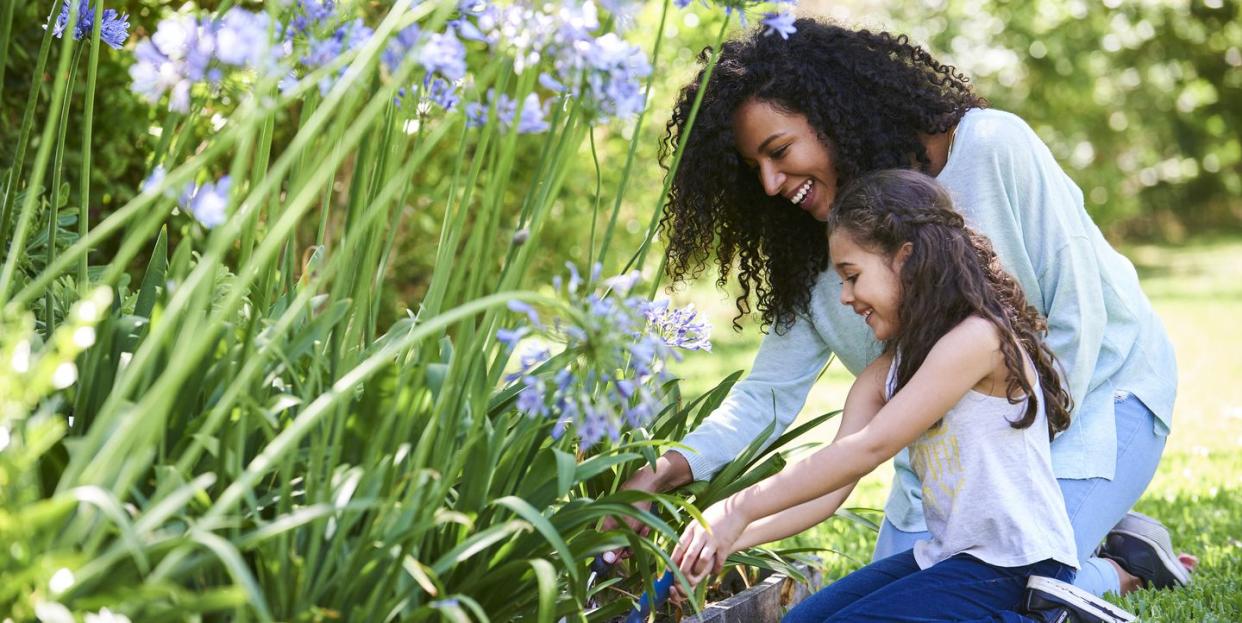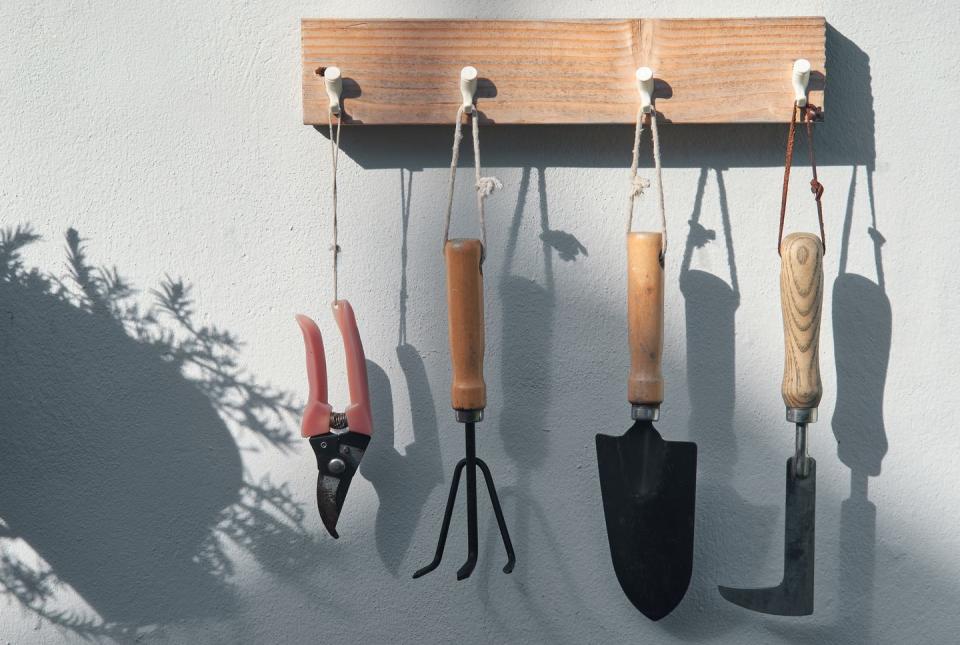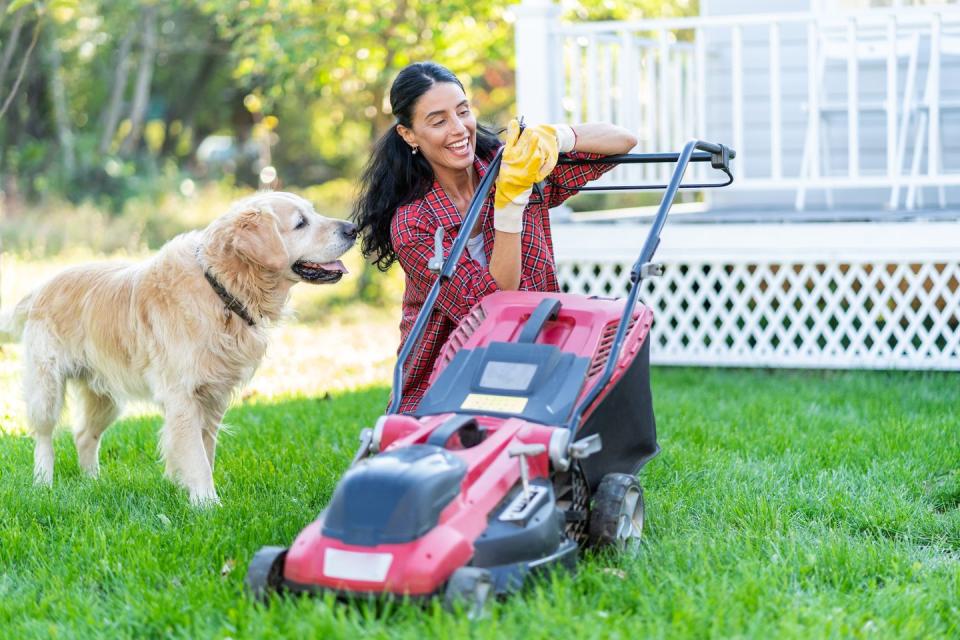6 garden things you aren't cleaning but should be

It feels like spring is finally coming, and you may be starting to look forward to spending more time outdoors. Whether that means relaxing on the patio with a good book, getting into gardening again or entertaining al fresco, sprucing up your outdoor space will make the time you spend in it more enjoyable.
So whatever the other spring cleaning jobs on your 'to-do' list are, make sure you tackle these garden cleaning tasks, too!
1. Garden tools
Tempting as it is to down tools after a gardening job well done and dash inside for a cuppa, taking time to rinse mud off garden tools while it's still fresh makes keeping them clean much easier.

Items like secateurs need particular attention as debris can easily get stuck in between the blades. The same goes for any other scissor-like tools. Carefully clean the blades with a scourer or wire wool. This will help remove rust as well as residues such as sap and cleaning regularly will also help to prevent diseases being spread between plants.
If you’re tackling hardened mud, dirt or rust on garden tools, use a wire brush and then wipe with an oily rag before putting them away. Or spray metal surfaces with a light coating of a general-purpose oil, such as WD-40, to prevent further rusting.
GHI Tip: Always allow damp garden tools to dry thoroughly before storing away, as this will help to prevent rust.
2. Lawnmower
Try to get into the habit of giving your mower a brush down after every use. If you don’t, the damp mulch of warm grass cuttings can meld themselves to the blades and the inside of the mower casing, making mowing much harder work next time.
To do this, always unplug or disconnect the machine from the power supply, then turn the mower on its side (if the manufacturer’s guide allows for this) for easy access. If you no longer have your mower instruction manual, you can easily search for this online.
Wearing heavy-duty or gardening gloves, brush grass from vents with a soft brush and a thick cloth. If your mower doesn’t come with a tool to clean the undercarriage, use a plastic spatula. Never use water or polish on the machine.
If it’s a petrol mower, let it run dry before storing it and get it serviced every couple of years.

3. Paths
Algae and moss soon take hold on garden paving slabs and brickwork, making the area slippery underfoot when it’s wet. A pressure washer is ideal for cleaning these, but take care not to dislodge cement or grouting.
Jeyes 4 in 1 Patio Power may help control the regrowth of algae. Or, for chemical-free cleaning, use a long-handled, wire-bristle brush.
4. Patios
With constant weathering, patios can look the worse for wear over time; leaves and debris can clutter this space while stains can mark the surface. Luckily, patios are simple to clean. First, remove your furniture and plant pots to give you full access. Then, use a broom to sweep away debris. A leaf blower can help speed up this job.
Pull up any weeds using a specialist patio weeding tool, such as the Draper Carbon Steel Hand Patio Weeder. Do so carefully around block paving to avoid damage. If you want to use a chemical weeder, make sure it won’t stain or discolour the surface by testing it in an inconspicuous spot first.
The next steps depend on the surface you’re dealing with:
Wood and composite – Always follow the care instructions from the manufacturer. Use a proprietary cleaning solution if allowed, checking the label to confirm it suits your patio type before applying. Work in the direction of the grain and use a soft-bristled brush to prevent damage on composite.
You can use a pressure washer on wooden decking, but take care to use the right settings and attachments, lowering the pressure as necessary to avoid damage.
Stone – Hardy surfaces, including granite, concrete and basalt, should be cleaned with a suitable patio cleaner, then rinsed. You can use a pressure washer to do this, but take care with attachments as before, and watch you don’t damage the pointing in the process. Soft stones, such as sandstone, limestone and slate, should be scrubbed by hand to protect the surface.

5. Conservatory
If you have a conservatory, a window vac may be a good investment for speedy window cleaning inside and out.
To remove the green mossy material that tends to cling to the uPVC or wooden frame, use a solution of washing-up liquid with an old tea towel. Or for really tough jobs that need chemicals, there are plenty of specialist cleaners such as HG UPVC Cleaner spray or Nilco UPVC Window and Door Cleaner. Getting at the roof isn’t easy and may be a job for your window cleaner.
If you’re tackling it yourself, get the right kit:
A long-handled tool will allow you to clean the roof from the ground – either a sponge on an extendable handle or a water-fed pole that allows soapy water to be pumped up the handle.
If you need to use a stepladder, make sure it’s on secure ground and you have someone else there acting as ladder support. Never climb onto a glass conservatory roof. If you're not confident doing the job yourself, call in an expert window cleaner to get the job done.
GHI Tip: Keep in mind that specialist kit like water-fed cleaning brushes are very expensive and it might be cheaper and easier to pay a window cleaner instead.
6. Gutters
Invest in some 'hedgehog' gutter brushes. Water can still flow freely, but they will stop leaves from getting stuck in your pipes and blocking them. Use a brush to remove leaves from the gutter before you install them.
Replace your guttering if it’s not doing its job. If water is flowing down the side of the building, it’s time to fix damaged guttering, as it can cause damp problems.
You Might Also Like


